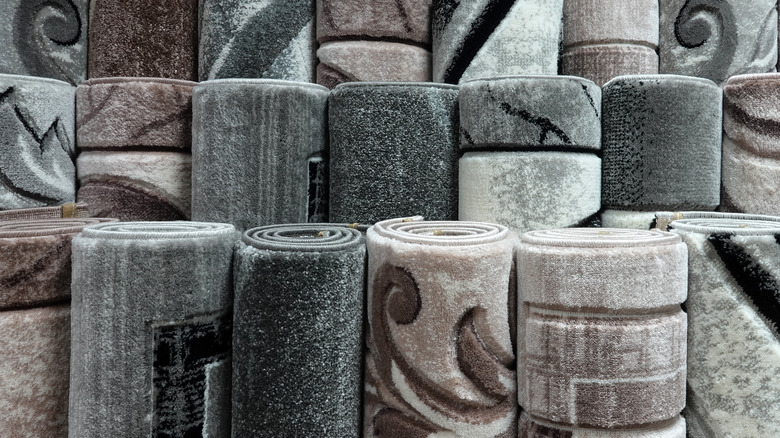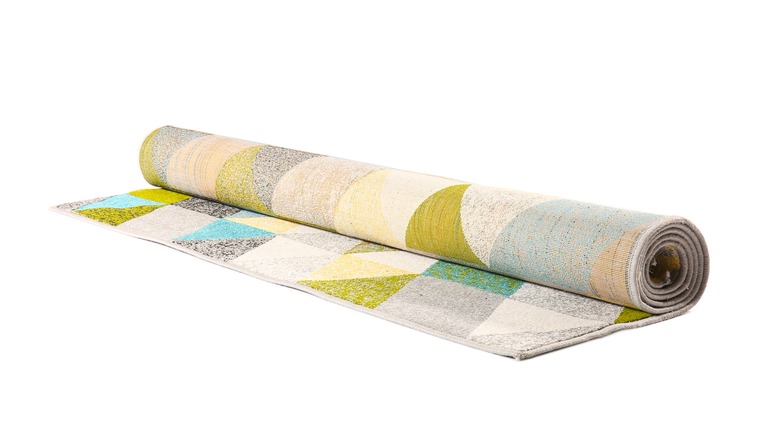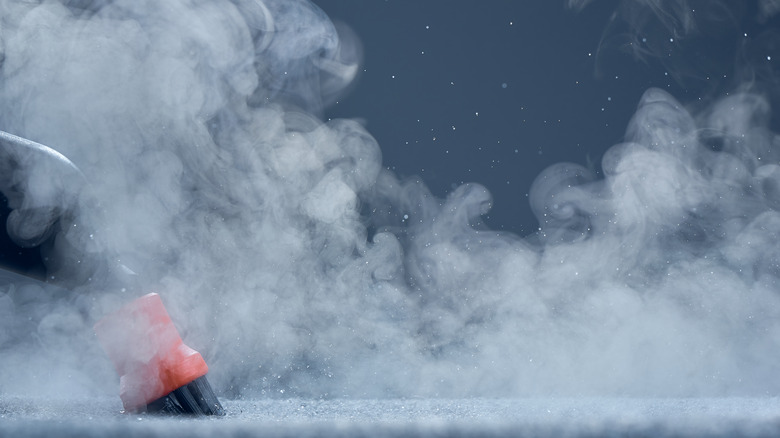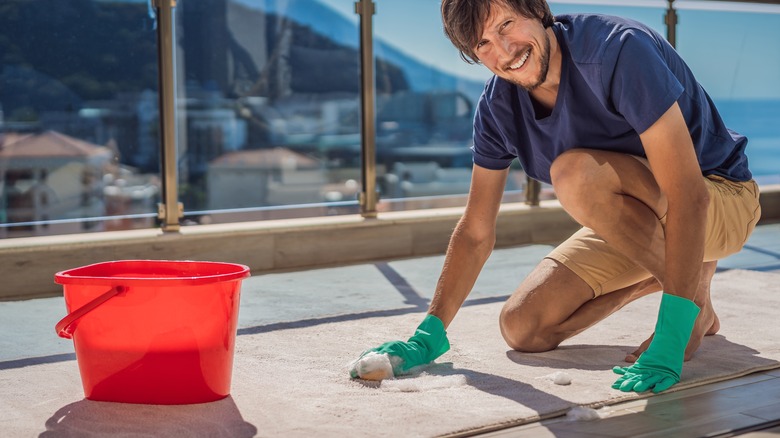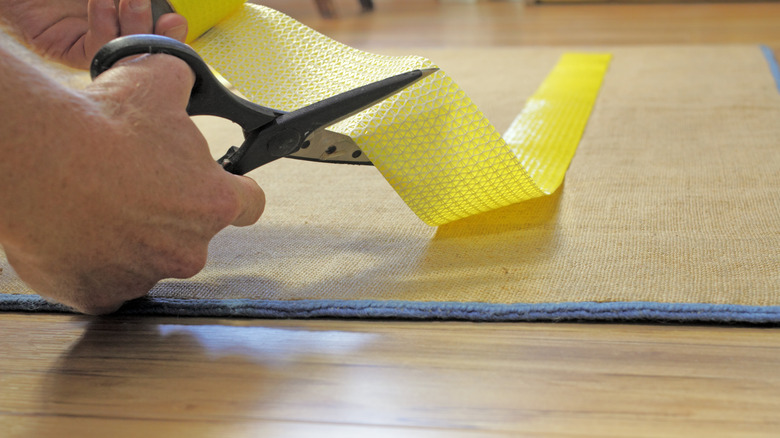The 5 Best Ways To Flatten Your New Rug
So you read our article, tips for perfect rug placement, and finally bought your new rug. Maybe you got it in person or waited until it was delivered. You already imagine what it will look like when you roll it open on your living room floor, but wait, why is it wrinkly? The rug doesn't fit your aesthetic anymore, with its many creases and curls. And worse still, you've nearly tripped over it twice!
The experts at Rugs Direct explain several reasons your rug could be creased. From how it was packaged to how it was washed and even how it was made. Thankfully, there are easy ways to fix this little problem of yours and have your space look as fabulous as it should. Keep in mind, however, that prevention is the best type of cure. If you have to store your rug for whatever reason later, roll it with the top facing inward instead of folding it. Also, keep it in a cool and dry environment, off the floor, and with nothing on top. Without further ado, here are clever ways to flatten your new rug.
1. Leave or roll it
If you've just unrolled a brand-new area rug, we're willing to bet that it has some ripples from packing or shipping. But not to worry; usually, you just need to smooth it down as flat as possible and leave it alone for a day or two. The fibers will relax within that time, and the rug will start to flatten out on its own, says Plush Rugs. In most cases, patience and gravity are what you'll need to get your rug in tip-top shape. For the best results, however, spread the rug out to relax on a hard floor whether or not you plan to use it later.
Where you simply cannot wait, you could try the pack-unpack-pack-unpack technique. If you unroll the carpet and then roll it again in the other direction, it'll be as flat as a pancake. If this nifty trick doesn't work immediately, there's also the option to let the rolled carpet sit for a day or more before you unroll it again the other way, via Luxe Weavers.
2. Use heat
There are three main tried and trusted ways to flatten your new rug using heat: the sun, a hair dryer, and an iron. Alternatively, you could employ a steamer, but this method is best left to the professionals. According to the experts at Proper Carpet Cleaning, steaming your carpets could make the colors bleed. The experts do a test for colorfastness, but that's too complicated, so let's stick to our earlier options. If you're using an iron, you want to avoid heat damage. A melted or scorched rug is an eyesore, not to mention a waste of good resources. Think about the horror of scorching your jute rug!
To avoid this, place the iron on low heat. And for the best results, put a barrier like craft paper between the iron and the rug. Similarly, with the hair dryer, use only low to medium heat, and work with it in a sweeping motion. If the heat from machines fails, try to spread the rug out over clean concrete or asphalt outside –– not grass as insects could crawl up and hide in them. This should ideally be done on a dry, sunny day. Leaving your rug under direct sunlight for at least an hour is usually all it takes to release any creases or wrinkles, via Eyely.
3. Spray some water
A less popular method of removing wrinkles on dents is by adding water. First, mist the area lightly with a spray bottle –– do not soak it. You want to distribute the water well enough to effectively fix your rug and not accidentally cause the dye to start running. Next, when the area is wet enough, use a comb or your fingers to gently manipulate the fibers until they are fluffed up again.
After that, bend it the opposite curl way, and leave it on the floor while it's still quite damp until it dries completely on both sides. It can take a day or two, and you should take advantage of the sun, if possible, via Geembi. According to the experts at Atiyeh Bros, the method works with nearly every kind of unevenness on rugs. However, it's essential to check with the rug manufacturer first because some rugs, such as ones made from natural fiber, can be easily damaged by liquid.
4. Tape it down
If the above methods seem impossible, head to a nearby furniture or home improvement store and purchase some double-sided carpet tape. Once it's applied to the back of your rug, the tape will stick to the floor, easily holding your rug in place. This works to flatten existing creases while preventing new ones from springing up. Not to worry about costs, carpet tapes are pretty cheap and come in a range of $14 to $25. It works on plain, hard floors and existing wall-to-wall carpets. Just make sure you press firmly to smooth the rug before sticking, via ABC Oriental Rug & Carpet Cleaning Co.
If carpet tape doesn't work, you can also try keeping them in place using an anti-slip underlay. This backing not only keeps your rugs in place but can also help them to lie perfectly flat in the long run, explains the experts at Rug Traders.
5. Flip it over and add weight
If your new rugs curl up at the edges only, even after the rest of the rugs have been flattened, then it's time to bring in some weight. You can simply fold them under and leave them for a day or so if it's curled upward. On the other hand, if it's curved downward, you'll want to flip the rug over, curl the corners under like before, or secure each corner with a heavy object. This forces the carpet fibers to relax, says RugPadUSA.
Not sure what kind of weight to add? The popular choice is often furniture or some heavy books. Place your rug flat in the room, and use the chance to rearrange your furniture so that the heaviest parts press down the curled corners. Alternatively, you could straighten the rug fringe with a comb, mainly if your edge curls are caused by the trim, via Biev.
